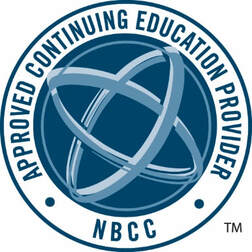 Date course created: July 2025
Date course created: July 2025
There are quite a few therapy approaches with a lot of clout in the evidence-based category, especially as paired with the treatment of certain disorders. But few pack the punch that ERP packs for the treatment of OCD and anxiety disorders. If you treat OCD or other stubborn, treatment resistant anxiety, ERP is a must-have tool you’ll need to master if you desire effective outcomes with those clients tortured by persistent obsessions, compulsions, or anxious thoughts.
Join this 5-CE intensive course on Exposure & Response Prevention (ERP) therapy, designed to blend foundational theory with practical tools you can immediately apply in your work with clients. ERP is the gold-standard, evidence-based treatment for OCD and is equally effective for treating anxiety disorders.
We’ll begin with an overview of OCD before diving into ERP, serving as an introduction for some and a refresher for others. Next, dive into ERP: what it is, how it works, and why it’s so effective for many people. Join us for a dynamic learning experience to enhance your clinical skills with ERP.
**This is a 5-CE noninteractive, self-paced online video course delivered in home study format via an industry-standard online learning platform**
Agenda:
00:00 – 00:55: Introduction, The Cycle & Nature of OCD, Common Subtypes of OCD
00:55 – 01:25: Identifying Mental Compulsions, Changing Relationships with Intrusive Thoughts
01:25 – 02:00: Strategies for Managing OCD, The Role of the Brain in OCD, ‘Sitting With It’
02:00 – 02:40: Functional Assessments, Detailed Assessment of Compulsions, Effective ERP Strategies
02:40 – 03:25: ERP Exercises Explained, Confronting Intrusive Thoughts, Imaginal Exposure Techniques
03:25 – 04:15: Interoceptive Exposure, Creative ERPs, Addressing Relapse Prevention
04:15 – 04:45: Case Studies, Contamination and Exposure Techniques
04:45 – 05:08: Recommended Resources, Q&A Session
Objectives:
This training will provide participants clinical knowledge and tools to:
a). After completing this training, participants will be able to assess for obsessive-compulsive disorder (OCD).
b). After completing this training, participants will be able to distinguish between OCD & anxiety disorders.
c). After completing this training, participants will be able to explain the OCD cycle.
d). After completing this training, participants will be able to explain the basic principles of Exposure & Response Prevention (ERP) therapy.
e). After completing this training, participants will be able to apply ERP to treat OCD & anxiety disorders.
f). After completing this training, participants will be able to formulate an ERP-based treatment plan, including creating a hierarchy & ERP exercises.
Target Audience:
Mental Health Clinicians & Therapists, including Social Workers, Psychologists, Marriage & Family Therapists, and Licensed Professional Counselors.
Instructional Level: Intermediate
Instructor(s): April Kilduff, MA, LCPC, LPCC, LMHC
Material Author(s): April Kilduff, MA, LCPC, LPCC, LMHC
For additional information about this course, the instructors, or the material authors, please contact Content Assistance at content@onlinececredits.com.
Course Materials & Delivery Method:
- Course Materials – The course is composed of a recorded presentation and written materials (e.g. a slide deck and/or other worksheets, manuals, or handouts as provided by the instructor). The slide deck and any additional worksheets or handouts (as provided by the instructor) are made available inside the Lesson module after a course is purchased.
- Delivery Method – This course is a recorded asynchronous, self-paced webinar training, and there is no access time limit or due date to complete it once enrolled. The enrolled learner will stream the recorded presentation and view the materials from their internet connected device via an industry-standard online learning platform.
CE Approvals:

Online CE Credits has been approved by NBCC as an Approved Continuing Education Provider, ACEP No. 6795. Programs that do not quality for NBCC credit are clearly identified. Online CE Credits is solely responsible for all aspects of the programs.

Mind Works Professional Education, Inc. DBA Online CE Credits, #1974, is approved as an ACE provider to offer social work continuing education by the Association of Social Work Boards (ASWB) Approved Continuing Education (ACE) program. Regulatory boards are the final authority on courses accepted for continuing education credit. ACE provider approval period: July 23, 2024 – July 23, 2025. Social workers completing this course receive 5 clinical continuing education credits.
Other Helpful Information:
- Refund & Cancellation Policy – You may review this policy at any time by clicking here.
- Accessibility Accommodations – If you require a reasonable accommodation for any reason, please email your request to cc@onlinececredits.com
- Course Completion Requirements – 1.) View the entire Lesson module (accessible from the main course page), to include the embedded and/or linked presentation video(s), slide deck, additional materials, and/or links to any shared video clip(s) that may have been edited from the presentation video(s) to comply with copyright laws. 2.) Click into the Quiz module accessible from either the main course page or the Lesson page and complete the Quiz with an 80% or better pass rate. 3.) Complete the course evaluation – you’ll be sent to the evaluation automatically once you successfully pass the Quiz.
- Posttest Requirements – You must answer 80% or more of the Quiz questions correctly to pass. If you fail to pass the first time, you may attempt the quiz again until you are able to pass with a score of 80% or better. Quizzes are graded instantly and automatically by the learning management system once your attempt is submitted.
- Certificate of Completion – Certificates of completion are automatically generated – downloadable from your Dashboard and emailed to you – once you view the Lesson materials and complete the Quiz and the course evaluation.
- How to Enroll – Login to the website first if you already have a user account. If not, you will create your permanent user account login information during course enrollment. Select the appropriate course library using the top menu of the website. Once inside your chosen course library, find and select your desired course to be taken to the main course page. Click the button on the top banner to enroll. When the order window pops up, enter your details and place your order. You will be emailed an enrollment confirmation message, and you’ll be sent to a landing page instructing you how to begin your newly enrolled course.
- System Requirements –
- Recommended Devices: Desktop, Laptop, or Tablet computer. (Note: Our platform is mobile responsive and may be fully accessed from a connected smartphone).
- Suggested Browsers: Updated version of Google Chrome, Microsoft Edge, or Apple Safari.
- Recommended Network: Home wi-fi, ethernet, or a public wi-fi with VPN (Note: agency or corporate networks are often equipped with restrictive firewalls that may adversely impact your experience on our platform).
- Recommended speed/bandwidth: Minimum download speed > 20Mbps and minimum upload speed > 6Mbps.
